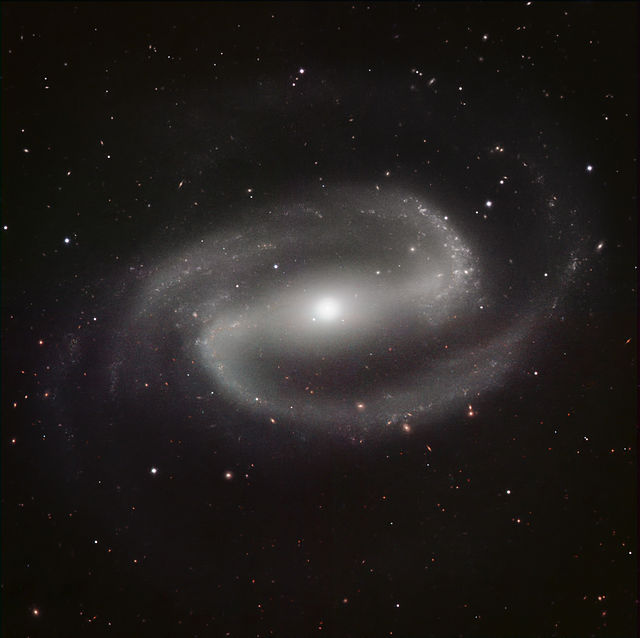In astronomy, a galactic bulge is a tightly packed group of stars within a larger star formation. The term almost exclusively refers to the central group of stars found in most spiral galaxies. Bulges were historically thought to be elliptical galaxies that happened to have a disk of stars around them, but high-resolution images using the Hubble Space Telescope have revealed that many bulges lie at the heart of a spiral galaxy. It is now thought that there are at least two types of bulges: bulges that are like ellipticals and bulges that are like spiral galaxies.
Artist's impression of the central bulge of the Milky Way
An image of Messier 81, a galaxy with a classical bulge. The spiral structure ends at the onset of the bulge.
Astronomers refer to the distinctive spiral-like bulge of galaxies such as ESO 498-G5 as disc-type bulges, or pseudobulges.
Central region of NGC 4314, a galaxy with a star-forming nuclear ring
Spiral galaxies form a class of galaxy originally described by Edwin Hubble in his 1936 work The Realm of the Nebulae and, as such, form part of the Hubble sequence. Most spiral galaxies consist of a flat, rotating disk containing stars, gas and dust, and a central concentration of stars known as the bulge. These are often surrounded by a much fainter halo of stars, many of which reside in globular clusters.
An example of a spiral galaxy, the Messier 77 (also known as NGC 1068)
Tuning-fork-style diagram of the Hubble sequence
Barred spiral galaxy UGC 12158
NGC 1300 in infrared light








